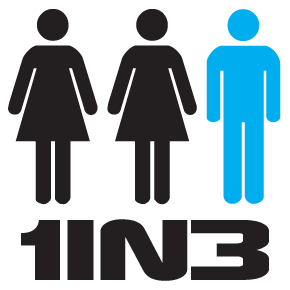Need knows no gender (The Independent, UK)
When Earl Silverman needed to escape his violent and abusive marriage, he looked for help, support and shelter close to his home in Alberta, Canada. It was not there. He made it his mission to ensure no other man would find himself in a similar situation. He opened a victim’s helpline, began lobbying politicians and campaigning for better services, and eventually succeeded in opening the Men’s Alternative Safe House (MASH*4077), Canada’s only dedicated shelter for male victims of domestic abuse and their children.
It was always a struggle. At every stage Silverman was refused federal and provincial funding. He depended upon private donations and his own money to open the shelter and keep it running, eventually selling his own home to make ends meet. Six weeks ago he announced that the situation could continue no longer and the shelter was declared closed. On Friday April 26 he was found dead in his garage, having apparently taken his own life. A story that could and should have been an inspiration has concluded as the most bleak and bitter of tragedies.
Silverman always believed the refusals to fund his services were driven by institutional indifference to men’s issues. It is hard to say how justified he may have been in this. There is more to running a service for vulnerable people than meeting a need, and it may be that his proposals, his business plan and his agility at jumping through the various hoops of public funding streams simply did not meet the necessary standard. He also admitted himself that local politicians and officials found his persistent, passionate campaigning to be vexatious and even threatening at times.
So perhaps Silverman was not the right man to be running such services, but someone has to be. As in most countries, Canadian men make up around half of those who experience any kind of partner violence, although are less likely than women to suffer the most severe and sustained abuse. That said, 13% of men reporting abuse to Canadian official crime surveys had experienced 10 incidents or more, while 11% reported having to take time off work as a result of injuries sustained. In Canada there were, at the last count, 593 publicly funded domestic abuse shelters for women and their children, offering around 10,000 beds. There were precisely zero dedicated facilities for men, just one or two beds reserved in a handful of the women’s hostels scattered around the country.
Men and women often experience the consequences of abuse differently and men may have more alternative routes to safety available. But it is also true that for some men, such as the twenty who used MASH with their children over the three years it was open, emergency shelters are an essential last resort.
Across the developed world, male victims of partner violence are caught between three prongs of a trident. The first is the violent personal and interpersonal dynamics of their own abusive situation. The second is a lingering patriarchal social value which holds that male victims are to be pilloried rather than pitied, reviled for their weakness in succumbing to a woman. The third is a dogmatic and ideological model of domestic violence which holds that abuse is a political act, serving to sustain male privilege, in which men are almost invariably the abusers and women the victims. The very existence of female abusers undermines this theory and too often male victims are portrayed as a statistical irrelevance, smeared as probable abusers themselves or as part of a malevolent plot against feminism, or simply ignored altogether. In one of Earl Silverman’s final angry blasts against the establishment, he wrote about the publicly funded 12 Annual Diverse Voices Family Violence Conference in Edmonton, which offered sessions on working with male perpetrators and on dealing with domestic violence against animals, but nothing about violence against men.
Silverman believed that the principle reason he could not access funding for MASH was because federal funding for domestic violence shelters is funnelled almost exclusively through a government body called Status of Women Canada. The clue is in the name. For as long as domestic violence is considered only as a category of violence against women and the issues are considered through ideology rather than best evidence, male victims will continue to be marginalised.
Whether we are talking about the complexities of gender-based violence, or for that matter disproportionate suicide rates, it is easy to get lost in means, medians and statistical patterns. Behind the data remain countless thousands of individuals in need. Need knows no gender, just as fear knows no gender, suffering knows no gender and compassion should know no gender.
Earl Silverman’s life and premature death is no fable or political parable, it is a devastating personal tragedy. Suicides never come down to a single cause, a single motivation, a single moment of despondency. This was a man to whom many others had turned in moments of deepest despair, yet apparently found himself unwilling or unable to turn to others when he felt – wrongly I am sure – that he had no more left to give. He leaves us with one less supportive shoulder, one too many reasons to consider our attitudes towards vulnerable men in crisis, and with perhaps more motivation to find help for those in need. He gifts us those thoughts, not with his death, but with his life.

